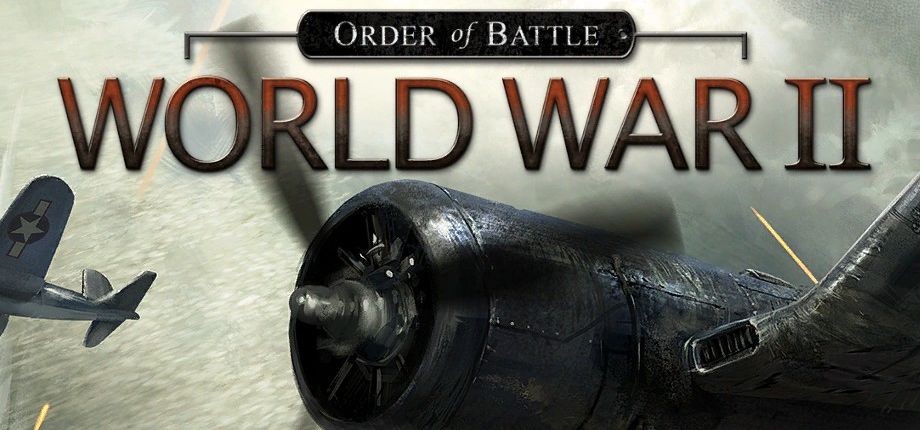Playing favorites with armour battalions.
Type: Single-player, Multiplayer
Genre: Turn-Based Strategy
Developer: The Artistocrats
Publisher: Slitherine, Matrix Games
Release date: 30 April, 2015


Intro
Last week, when I reviewed WarPlan, a military strategy simulation game published by Slitherine set in World War 2, where I made the joke that this seems to be the majority of the games they publish. This week, I’m reviewing Order of Battle, a military strategy simulation game published by Slitherine set in World War 2. When writing the WarPlan review, I made multiple references to Order of Battle and other games whose vein it was in, such as Panzer Corps 2, a Slitherine-published military strategy (etc.). (They do make other types of wargames, with modern warfare being second most common, but over half the roster on Matrix Games really is World War 2.)
Ancient History (in Game Cycle Terms)
Order of Battle started its life as Order of Battle: Pacific back in 2015. It was sold in the more traditional manner of being a $40 game for a game with a tutorial and two campaigns where you play opposing sides, being a Japanese and American navy campaign. This was likely done because this game is so mechanically similar to the already very popular Panzer Corps game that it makes more sense to just list what things are new than what the similarities are. (More on that below.) Hence, they did what any company making a follow-up to a game about World War 2 (which always first involves the UK/US forces versus Germany first, unless the developers are Russian, in which case they go for the Eastern Front) always do next – the Pacific.
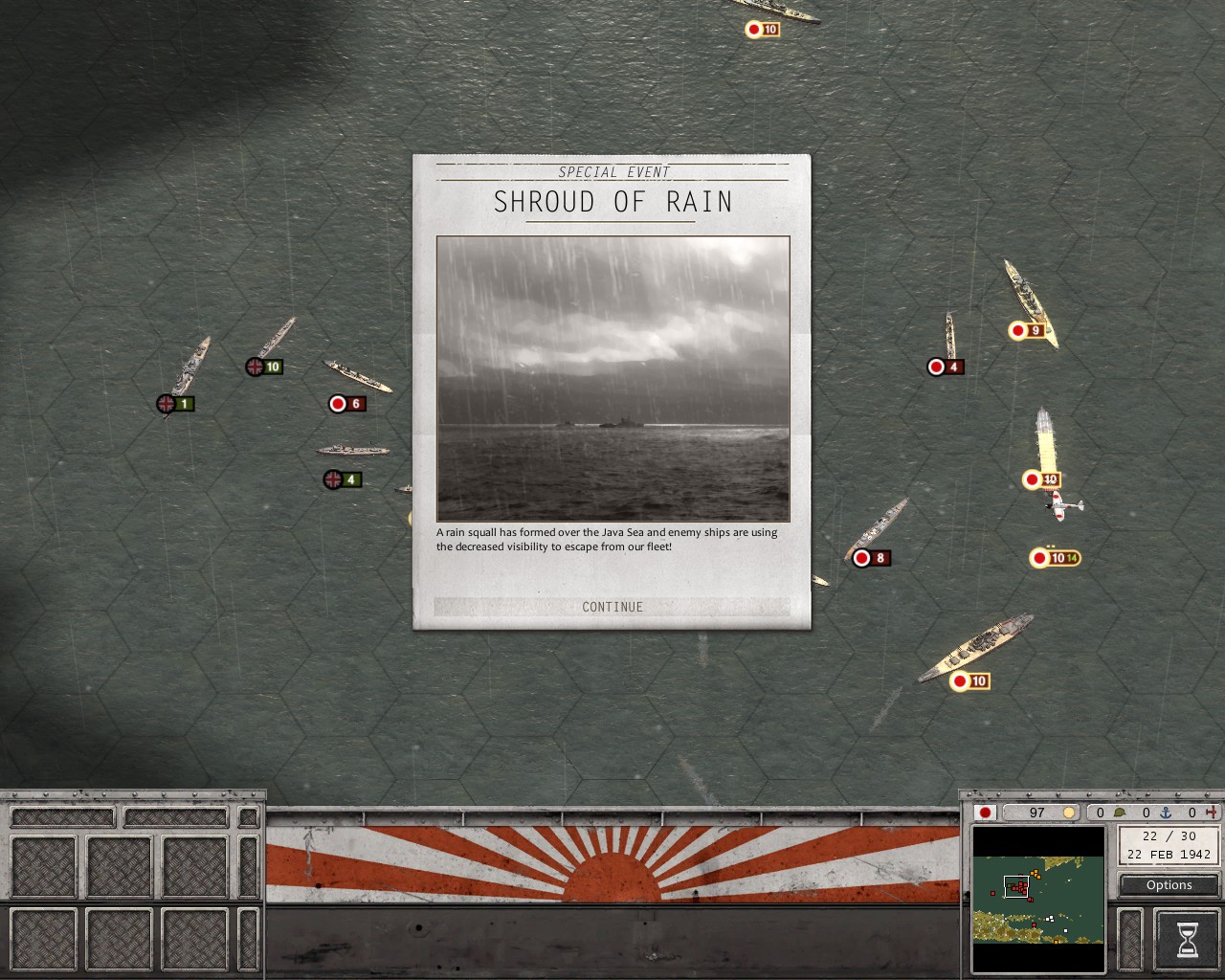
After making the main campaign and some DLC to add side campaigns for the Second Japanese-Sino War and US Marines campaign, the developer decided to go back on this division, and rebranded the game as Order of Battle: World War II, before making Winter War as a start, where one plays as the Finnish holding off the early Soviet advances on its neighbors before Operation Barbarossa properly started the Eastern Front. Afterwards, it fully went back on the notion of making its game distinct from Panzer Corps by just outright releasing three DLC mini-campaigns (four if you count the alternate Sandstorm path that leads to the same final campaign) that form a full Panzer Corps campaign when played consecutively while also shutting out the ability to purchase naval units for your corps.
That said, whereas Panzer Corps 1 had a base campaign that then split into a huge Grand Campaign of multi-stage DLCs, only to eventually be re-released as Panzer Corps Gold with everything in a single package for $30 (a good bargain for gamers who never bought the game and don’t mind the dated graphics, but an annoyance for those who bought most but not all of the DLC and cannot buy any more without buying the whole package for $30), Order of Battle decided to entirely go the split-up DLC route.
The Panzer General Lineage
An even longer time ago (before some of you might have even been born), computer strategy gaming pioneers and legends SSI (Strategic Simulations Inc) developed Panzer General, a strategy game that traded in the grand scale of their previous strategy games to focus upon being in command of a single fighting force (generally a corps) whose units (roughly battalion-sized) you kept and developed over the course of a chain of missions in a campaign. I don’t particularly need to go into the mechanics of Panzer General in detail, however, as it is essentially one of only two baseline default styles of strategy wargaming, it is by far the more accessible of the two, and its mechanics have been wholesale stolen so much that Panzer General clones are basically their own sub-genre at this point. (The other main lineage being the “digital cardboard token” style where infantry units are masses of “x” tokens.) Hence, the various Strategic Mind games from Starni are another clear example of the Panzer General formula. Even the Advance Wars games I adored when I grew up share much on a mechanical level in common with Panzer General, even if their aesthetics are so clearly different.
Panzer General games are saliently hex-based and turn-based, with units representing unrealistic pools of a single type of unit, by which I mean that you have units (often supposedly battalion-sized, or composed of around 1,000 soldiers or 250 vehicles) that are composed entirely of a single type of equipment like anti-air cannons or anti-tank guns that would be folded into infantry units of battalion size as a few teams of special equipment, never allowed to operate independently in a unit of that size.
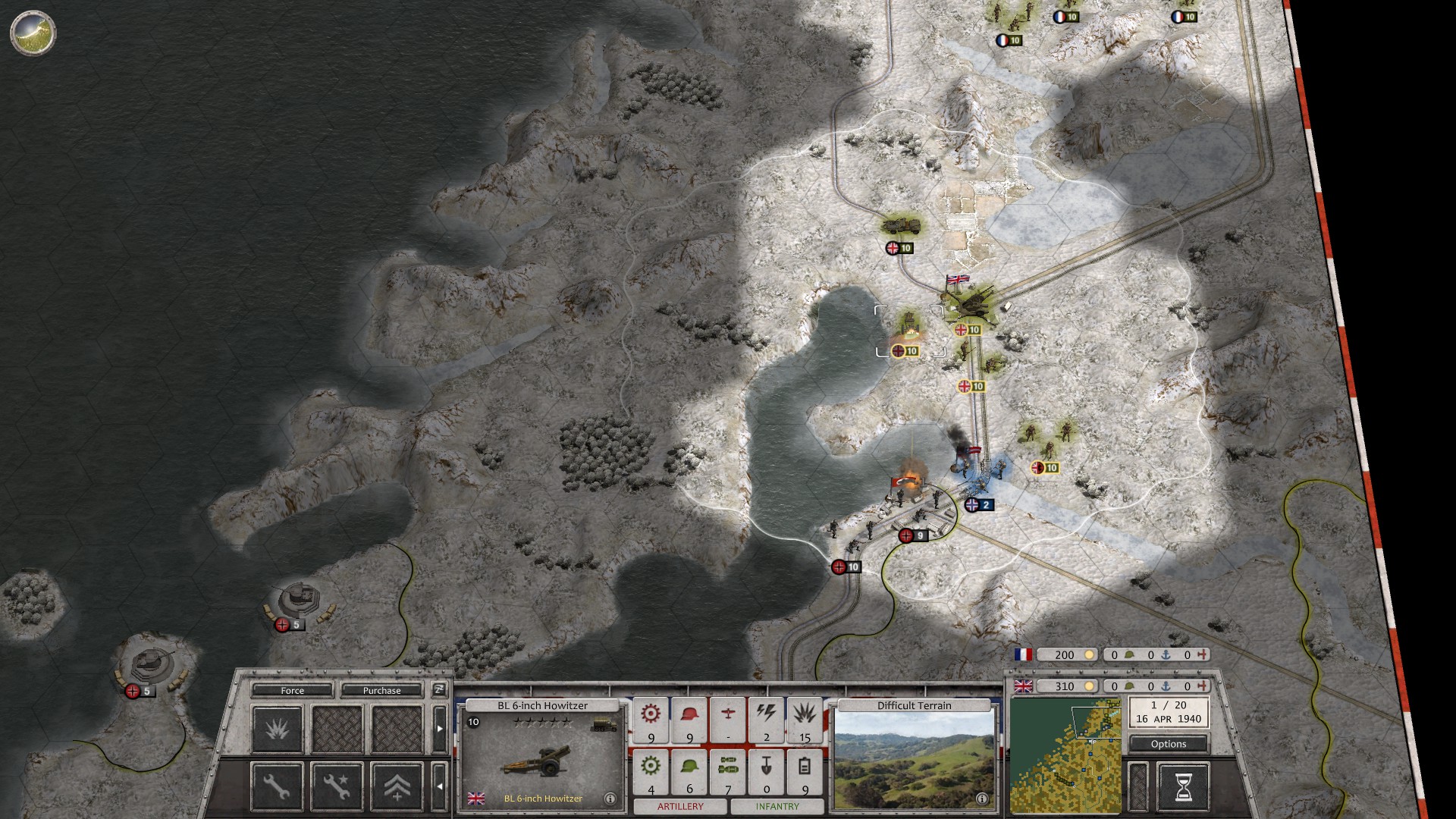
This is probably the most immediately recognizable effect of the sub-genre’s push away from the srs bsns, “realism”-over-playability philosophy I applauded WarGame for breaking away from. Panzer General games focus more upon gameplay first and try to keep some of the broad strokes highlights of the historical battles being simulated second, and worry about realism a distant third place. It should be little surprise that actually focusing upon gameplay over what one insists is “realistic” in a highly abstracted simulation will generally result in better gameplay and more actual strategic depth than games that pride themselves on “realism”.
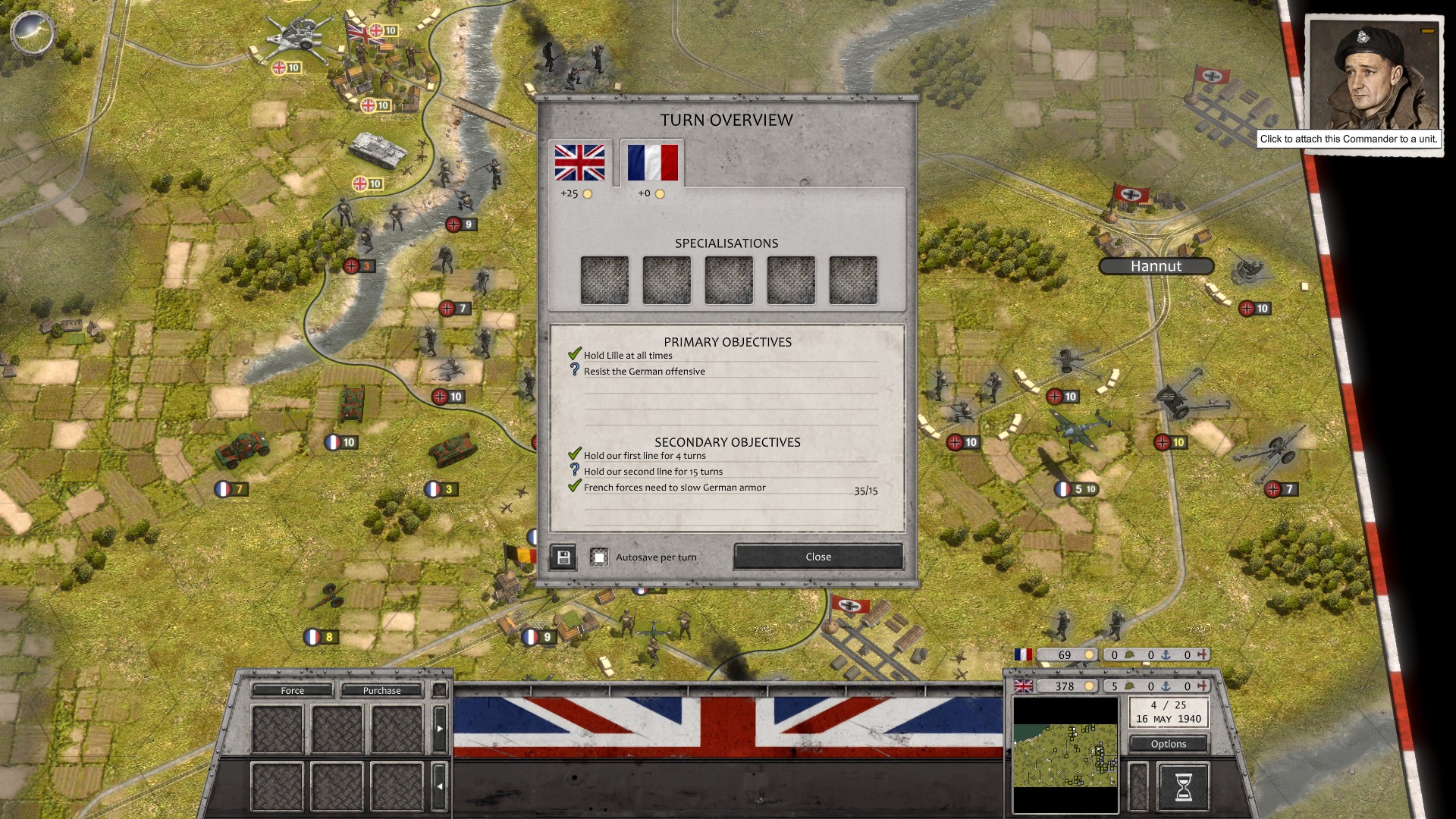
Campaigns are made up of strings of missions, where some games will allow for branching paths in the campaign, depending upon completion of certain secondary objectives. (Panzer Corps for example, has an Operation Sealion DLC that lets you split off and invade England if you do well enough in the ’39 and ’40 campaigns.) Order of Battle, meanwhile, tends to instead have missions that are altered by secondary objectives. For example, there may be a secondary objective to keep a named ship that is not part of your core forces from being destroyed, and if it is kept in action, it will appear in subsequent missions to give you support, as well.

The notion of “Core Forces” itself, however, is one of the last key aspects of a Panzer General game. Core forces are, to put it bluntly, Your Dudes (TM). They carry over from battle to battle, while non-core forces are removed from the game after any given mission. (In Order of Battle, core forces are denoted by a gold frame on their status bars, while non-core are black.) Unit experience carries over, and more importantly, you need to pay for repairs to your own units, while you can return the loaners while they are still on fire or just not return anything at all. Repairs come from Resource Points (RP), which are also used to buy new units.
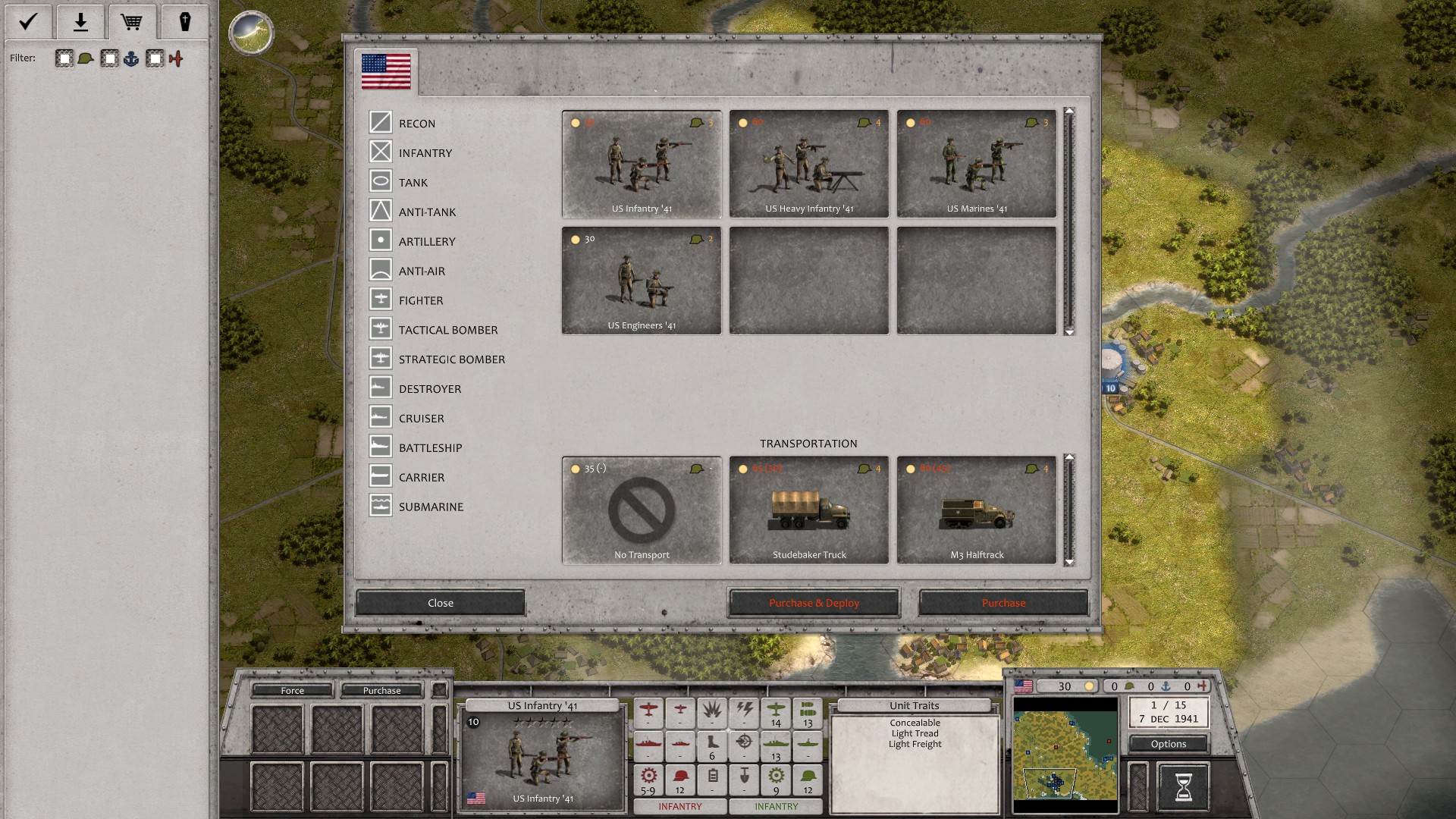
Panzer General games, as previously mentioned when I contrasted them to the highly defensive Möbius Front ’83 strongly encourage aggressiveness. There are few battles where you can just defend so well you take no damage while the enemy wears themselves out, you need to repair damaged units constantly. Order of Battle units all have 10 HP, with only defense ratings distinguishing how much damage they take from a given attack. A unit can repair 2 HP in a turn where they move or 5 HP if they do not move and are not adjacent to an enemy, although this costs a significant amount of RP. The problem is, the enemy gets to do this, too, and they have no apparent limit to their RP, so if you ever let up and let an enemy repair, it means they’ll just come back and hit you again, causing more damage that both slows you down in timed missions and deals more damage you have to pay more RP to repair. Their RP is infinite, and yours is finite, so completely eliminating an enemy to prevent them from being able to exploit that is your only hope. (The enemy fortunately does not have the power to requisition new troops except through scripted events.)
Pacific’s Innovations
The most obvious difference between earlier Panzer General descendants like Panzer Corps and Order of Battle takes the shape of having core naval units that take front-and-center in explicitly naval battles. Command points in general are also a novelty, as Panzer Corps only had a unit cap, but didn’t assign different command point values for each unit, making some units like tanks count about twice as much as infantry to the cap, but the split in command points between land, naval, and air command further distinguishes the game by making you rely on a set mix of core units.
Fighting naval battles with the same rules as land battles would get boring, however, as if you ignore the much greater complexity of ships (which most of these games do), you are basically fighting battles over large expanses of totally flat plains. Land battles remain strategically interesting even when you’re basically fighting the same match-ups of tanks versus tanks or infantry versus infantry over and over again because different terrain and all the chokepoints and advantages it can give keeps things fresh, but naval battles, especially in open water, lack that, and any one slugging match becomes the same as any other if the intricacies of how a ship runs are not modeled.
To that end, Order of Battle added a layer of rules governing naval combat that tries to keep every unit type relevant and make for some tactical choices. Units take less damage when they moved last turn, for example, yet if you move towards or away from the enemy, your attack power decreases, because if you move perpendicular (or circle-strafe) your enemy, you are considered “broadside” to them, and attack with full power.
Destroyers are notable in naval battles, however, as their guns are useless against anything bigger than other destroyers, yet torpedoes are a significant threat to capital ships. In a notable departure from reality, destroyers are much less vulnerable to torpedoes, however. More importantly, and this will be covered in depth in the following section, destroyers are cheap, and therefore cheap to repair, but they’re not that much harder to damage than battleships. Add to this that enemy destroyers like to kamikaze run to torpedo your vulnerable battleships, and the real-life tactic of setting out destroyers as a picket around the capital ships becomes an enforced mechanic – keep destroyers between your battleships and enemy destroyers at all times, or lose your battleship to constant torpedo barrage.
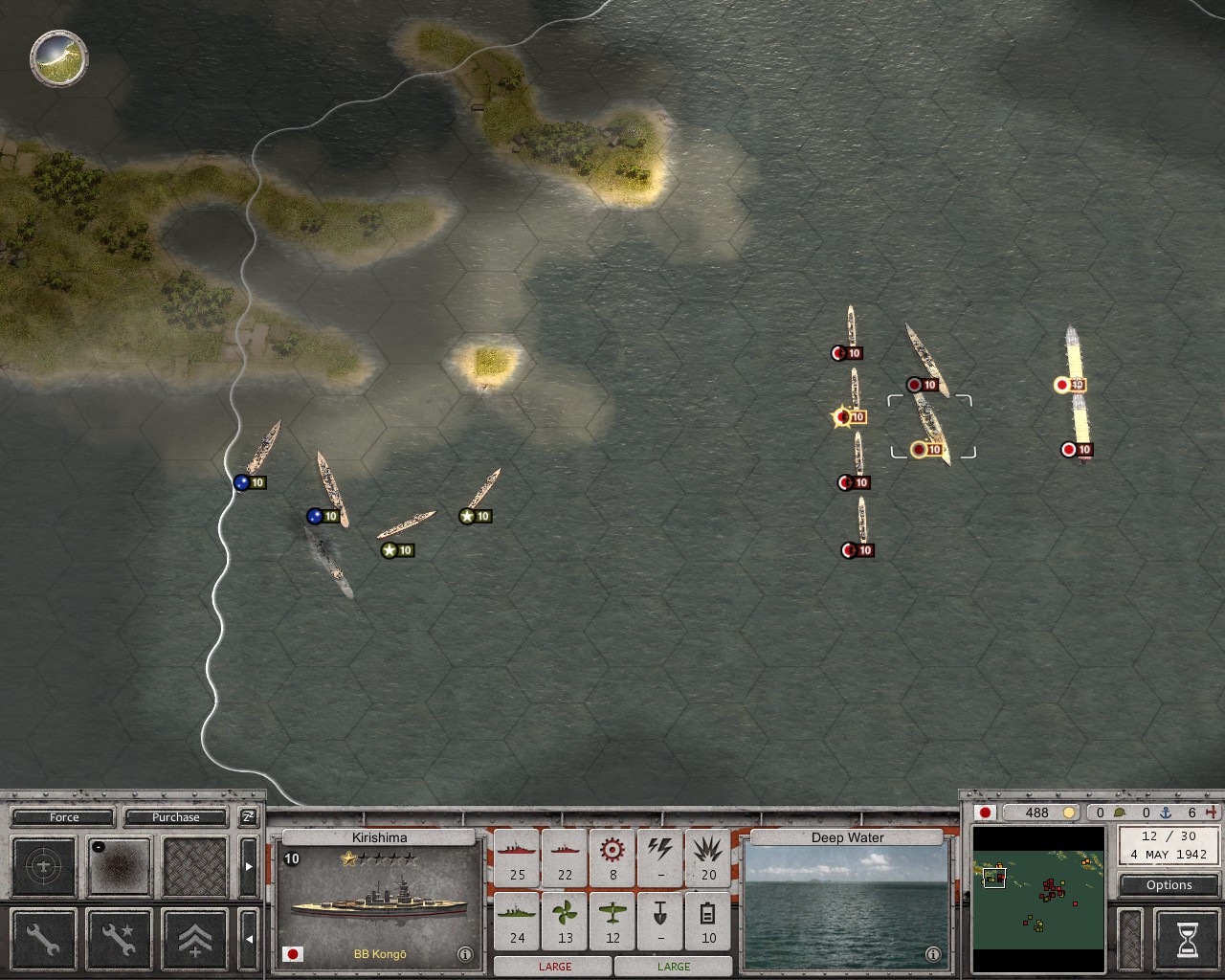
Order of Battle also has a supply system, which is its own section of this review, and the ability to represent amphibious assaults and loading of land units onto transports to launch those amphibious assaults, which is obviously useful in a game originally set in the island-hopping battles of World War II in the Pacific. Too bad the mission designers have to be dragged kicking and screaming into actually using these assets most of the time!
The designers seem more interested in having campaigns with exactly 12 missions than making the missions themselves as good as they can be, so missions will often be split into two parts, with a sudden reset of all forces between mission breaks, even when you’re supposed to be in the same battle, just a day later. This was especially prone to happening in the original campaign when you cleared out the sea around Java Island, for example, then did the amphibious assault of Java Island in the next mission, but in between those cuts, they do the landing for you, give you a supply city that negates the need to supply your forces by sea until they can get established, and then they take away most of your naval units, give you the land units they prevented you from escorting to the landing site in the last mission, and restrict the map to one where forward advance has to take place along just two lanes dictated by chokepoints, instead of letting you choose your own advance.
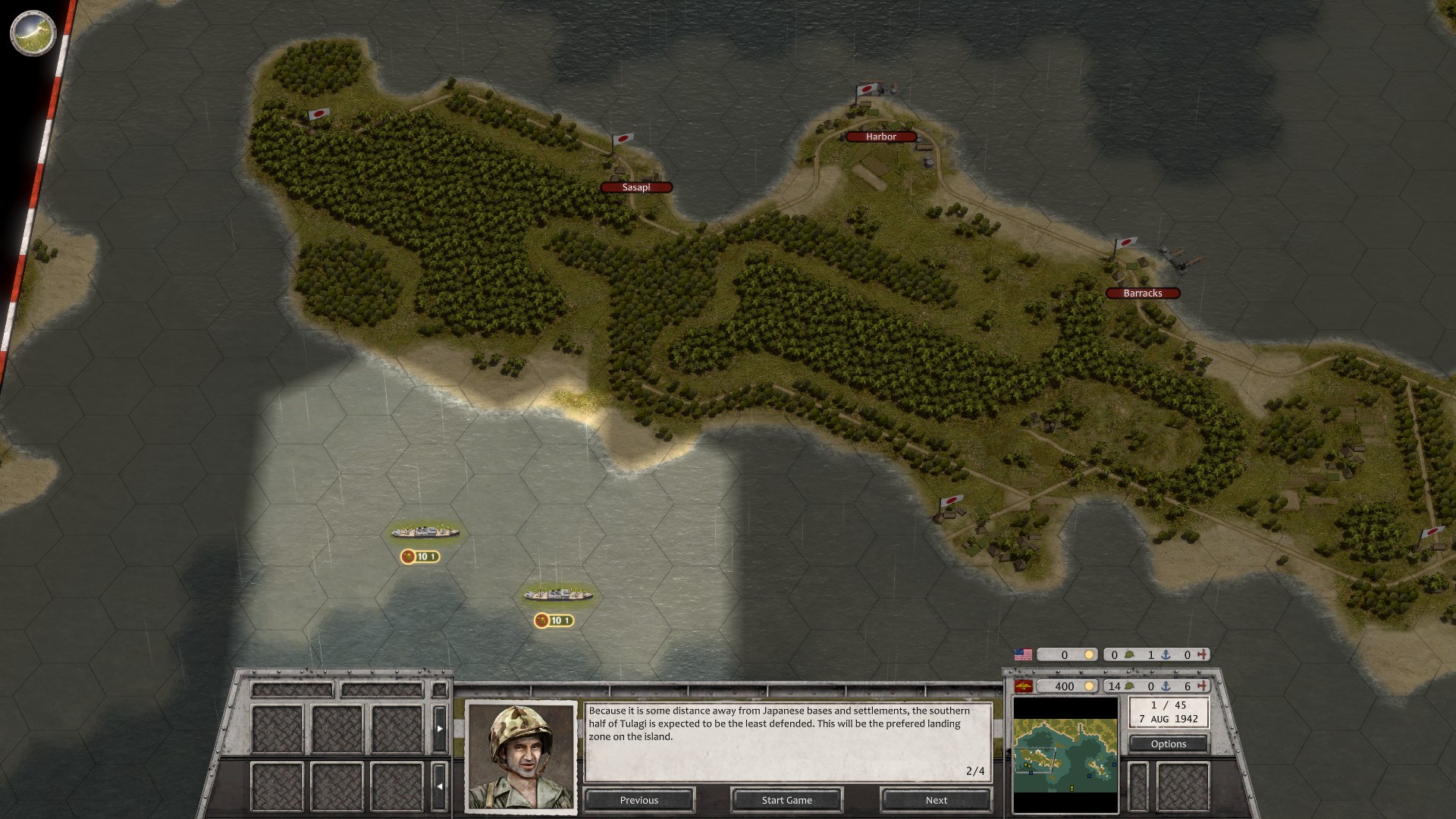
The RP Economy
You know how I talked about missions having primary and secondary objectives to complete? In other types of strategy games, that would be what you would focus upon, but that’s just a sideshow in Order of Battle. No, no, the real be-all end-all strategic concerns for you in Order of Battle are Resource Point (RP) and Command Point (CP) efficiency. CP are split between land, naval, and air forces as well (represented by the green helmet, blue anchor, and red plane icons), and these are caps on the amount of forces you can bring into any given mission.
This is part of your basic choice of units to purchase for your core force, as most units have a similar (low) cost in CP, but vary wildly in RP. Nearly all air units cost 3 air command points, for example, except for floatplane scouts that cost 1 air CP. This means that being given a budget of 10 air CP means you can bring 3 normal air units (often picking two fighters and one tactical bomber), and one scout plane in a mission. Fighters might cast anything from 70 to 150 RP, however, even if they cost the same amount of CP, and repair costs, crucially enough, are proportional. Tanks and battleships cost 4 or 5 land or naval CP respectively, while infantry and destroyers cost 3 land and naval CP. In spite of the fact that battleships cost only two-thirds as many more CP to field, they cost five times as many RP to build and much more crucially, repair.
You will spend maybe 10% of your RP on new units. Repair forms the overwhelming bulk of your resource expenditure. Therefore, purchasing the most powerful units available is often a trap that will just bankrupt you in the long run with repair bills. Worse, the game is filled with traps in the form of “upgrades”. Your precious low-RP early-game units stop becoming available as you progress through a campaign, forcing you to buy total RP hog “advanced” versions of equipment that have negligible increases in power for tremendous increases in RP costs to buy and repair these units.
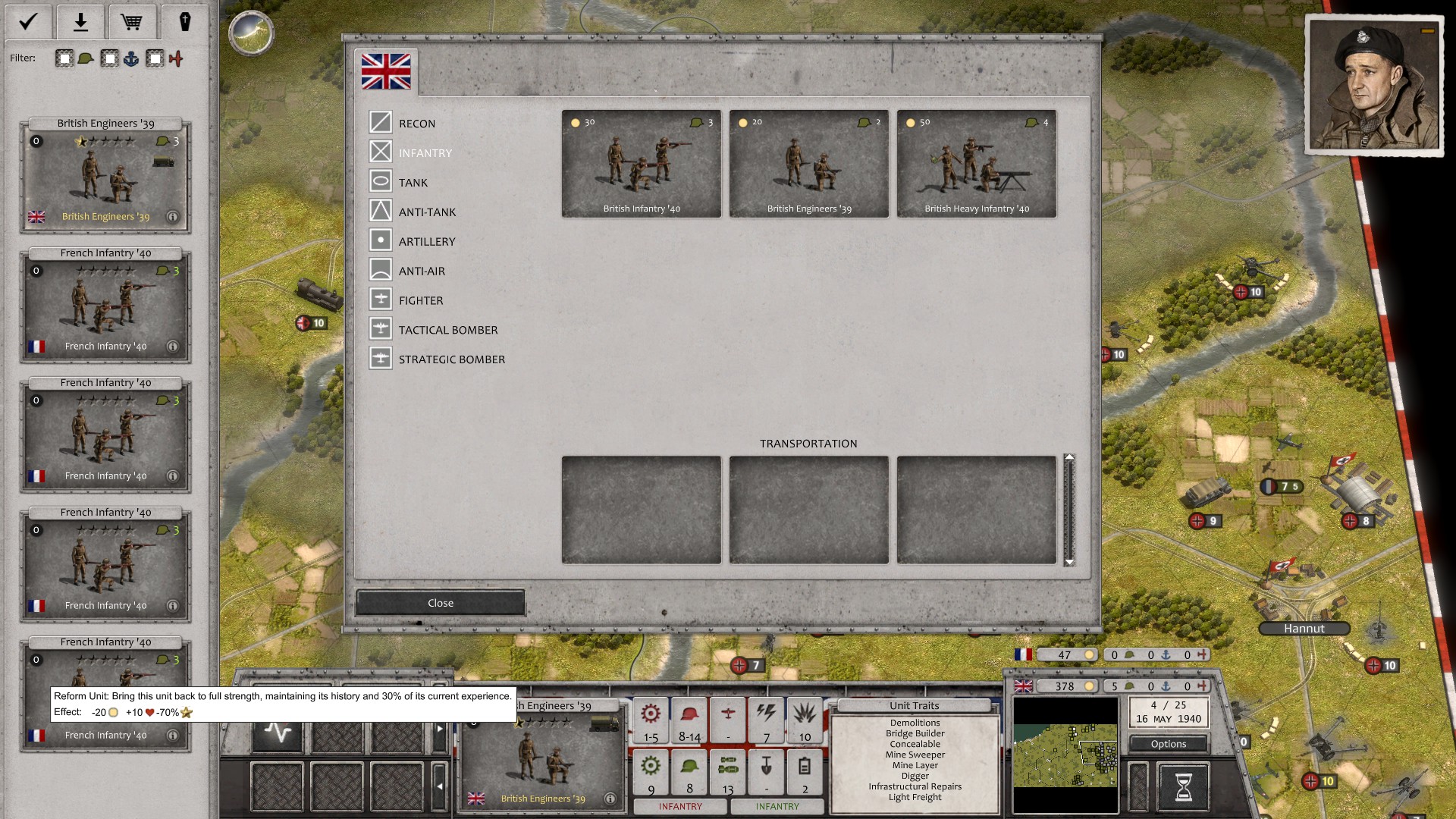
Repairing a unit normally inflicts a tremendous experience penalty – as high as 40% for 5 HP for hardened elites. To combat this, you can perform “elite repairs”, which allow you to repair without losing experience, but at a percentage increase in cost. This percentage increase is nothing to scoff at, however, as repairing 5 HP can wind up costing as much as the entire unit purchased new, while a regular repair might cost a third as much.
A basic engineer unit will cost 20 RP new, about 8 RP to repair for 5 HP, and 20 RP to repair from complete destruction. Meanwhile, an elite tank unit will cost 20 RP to elite repair for each HP, and upwards of 70 RP to repair 5 HP.
This completely overtakes all other factors in determining whether you will be able to survive a campaign. If you see an entrenched enemy infantry defending a city you need to take, you might be able to deal 5 damage and take only 1 in return with your elite tank unit, or you could deal 2 damage and take 4 in return with your cheap engineer unit. Which do you choose to send in and take damage? The engineer, of course – that 4 damage only costs about 6 RP to repair, while the tank’s would cost 20! Keep the tanks in reserve until the enemy is so battered they can’t fight back. Screw the lives of your men, you’re here to play favorites!
What’s more, high RP costs are not at all proportionate to the quality of the unit. I said before that “more advanced” units were often traps, but it’s important to note that unit stats are based more upon unit type and when they were in production than their actual historical quality. Japanese destroyers, for example, actually dropped in tonnage, cost, and combat power after the London Naval Treaty started restricting their size until after they broke the treaty, but in Order of Battle, destroyers cost more the more recent their production time was, and destroyers are considered “obsolete” after certain dates and taken off the market for you to purchase. Be sure to buy a Fubuki early in the Japanese campaign, before you even can use it, because by the time of your first naval mission, Fubukis are off the market, and you have to buy the Kagerous that cost 10 RP more, instead! This is an increase of 17% to the repair costs of a unit that exists basically solely to eat torpedoes for more expensive units! Never “upgrade” them, it’s purely an RP drain for little tangible benefit! Even vehicles that were notorious garbage and makes it to “top ten worst” lists on any historian’s list of design blunders (such as, say, any tank made by the Japanese) will prove able to defeat another unit in the right category, especially when effectiveness loss comes into play. You can knock out Tiger IIs with an M3 Stuart! (And that’s considered a prize tank when you capture one as the Japanese…) You can easily win battles grinding enemies down with cheap and expendible ’39 engineer units while tanks with three to five times the supposed attack power only do about 50% more damage, while costing ten times as much to repair.
I cannot stress enough how much this has to overtake all other concerns if you are going to play this game well. RP solvency is the lifeblood of your forces as you cannot do much of anything withing needing constant repairs, and there is simply no way to win if you do not repair your units. (Core units do not even get repaired even at a discount between missions – you have to pay in full.) Secondary objectives in Order of Battle often only mean getting some bonus RP, so it’s just a calculation of whether you will incur more RP costs repairing units for trying to take a side objective than you’ll gain from the side objective itself. Secondary objectives that prevent enemy units from appearing in later missions are only worth pursuing if they will do more damage in that later mission than you will take on achieving that secondary objective in this mission.
This also applies to non-core units. Again, they’re gone at the end of the mission, so you might as well trash ’em! You don’t need to repair someone else’s units, but you do need to repair yours, so make sure to send the valuable, vulnerable torpedo bombers out in front of your core fighter craft so your precious fighters don’t get scratches on their paint trying to protect someone else’s stuff. Starni’s Strategic Mind had you lose points to pay back damages for loaner units to stop this kind of thinking, but it’s absolutely the way of life in Order of Battle to trash all loaners.
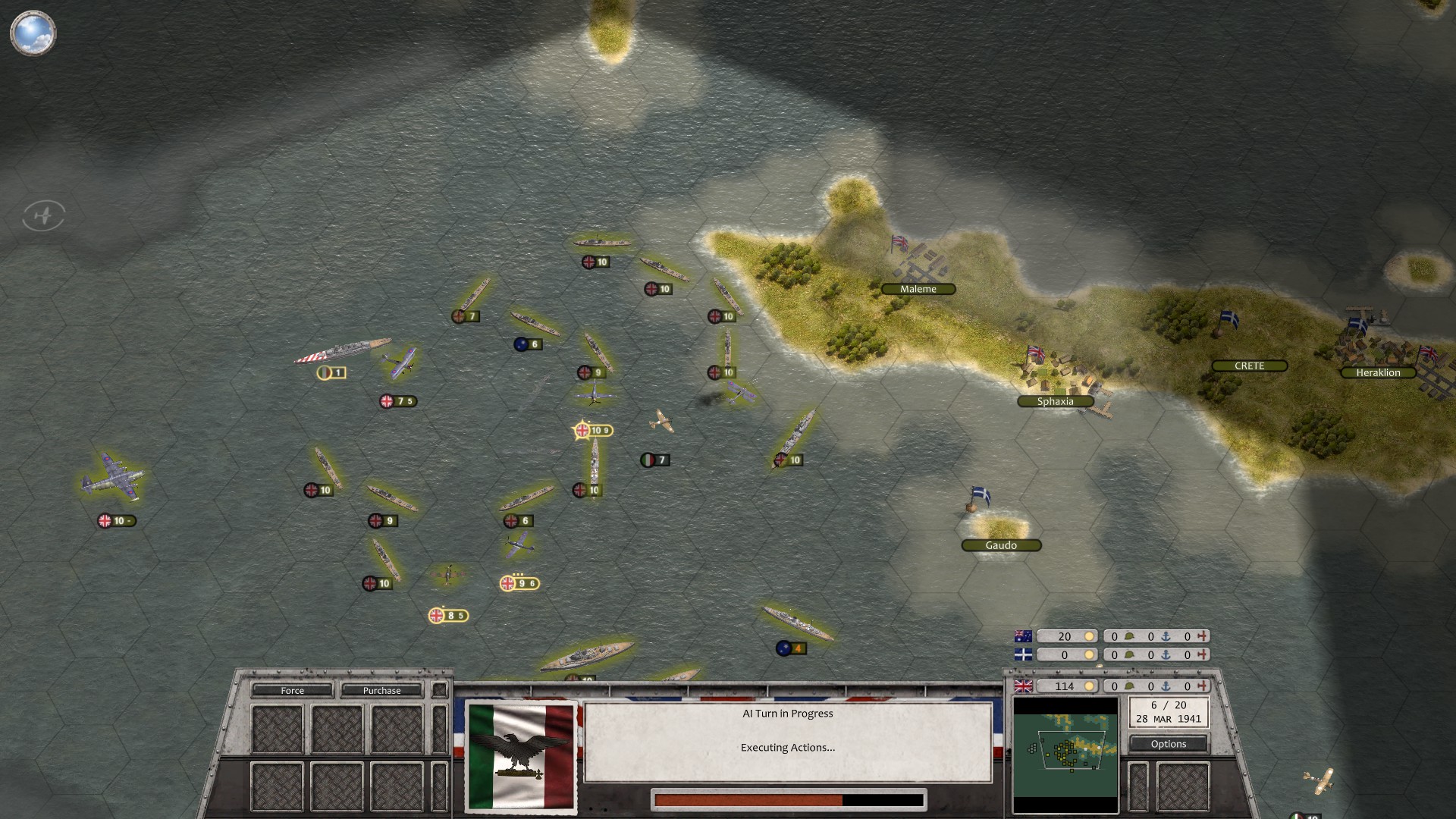
By far, the RP economy creates the most “unnatural” and unintuitive aspects to the strategy of the game, and the more you get yourself into the mindset of it, the more it distorts how you can look at the game in mostly negative ways. Completing objectives is secondary to preserving your precious babies, especially as your RP starts to hit critical levels. Screw the commanders, unless they’ll pay you more RP, you’re doing the absolute minimum to keep out of a game over while focusing entirely on keeping your favorites in pristine condition.
Effectiveness
The game Order of Battle set out to dethrone as inheritor to Panzer General, Panzer Corps had a suppression mechanic, which was applied to units that were struck by artillery and/or bombing. This was to represent how such attacks were highly inaccurate, and rarely able to kill very many people per explosive lobbed, but they were very able to bludgeon the enemy into not wanting to fight for a bit. “Shock and awe” is a real thing, as suddenly having everything around you explode is not just rather terrifying and might scare soldiers into ducking and covering rather than manning their posts, the raw concussive force of the air pressure from being near explosions is disorienting and traumatizing, causing those subjected to it for sustained periods of time to simply shut down their mind and stare off into space, even as the enemy comes pouring in towards them.
To this end, the suppression mechanic was a number of strength points that the game counts as not able to contribute to the fighting, but which return after a single turn or attack. If you wanted to keep them suppressed, you needed to keep them under artillery barrage. This directly encouraged play where you picked one target that was dug in and difficult to destroy, beat it down with artillery and bombing runs, then hit the enemy with your strongest unit, often a tank.
Order of Battle uses a mechanic similar, yet slightly different mechanic to that of WarPlan’s efficiency (which I should point out came several years after Order of Battle) in that it has effectiveness that acts as a multiplier on the offensive and defensive strength of a unit. This means that even the most powerful units will lose to units that should have no business direct attacking, such as scout units with nothing but machine guns destroying heavy tanks like Tigers because the Tigers lost their defensive capabilities at 0 effectiveness. Effectiveness, like efficiency, doesn’t just go down when a unit takes an artillery barrage, however, it goes down when you attack or when you move through rough terrain. Artillery itself loses effectiveness as it bombards enemies often more consistently than it can inflict effectiveness loss on the enemy. Unlike WarPlan’s efficiency, however, Order of Battle’s effectiveness can recover basically all effectiveness in a single turn of not doing anything, although it does not passively recover every turn like WarPlan’s.
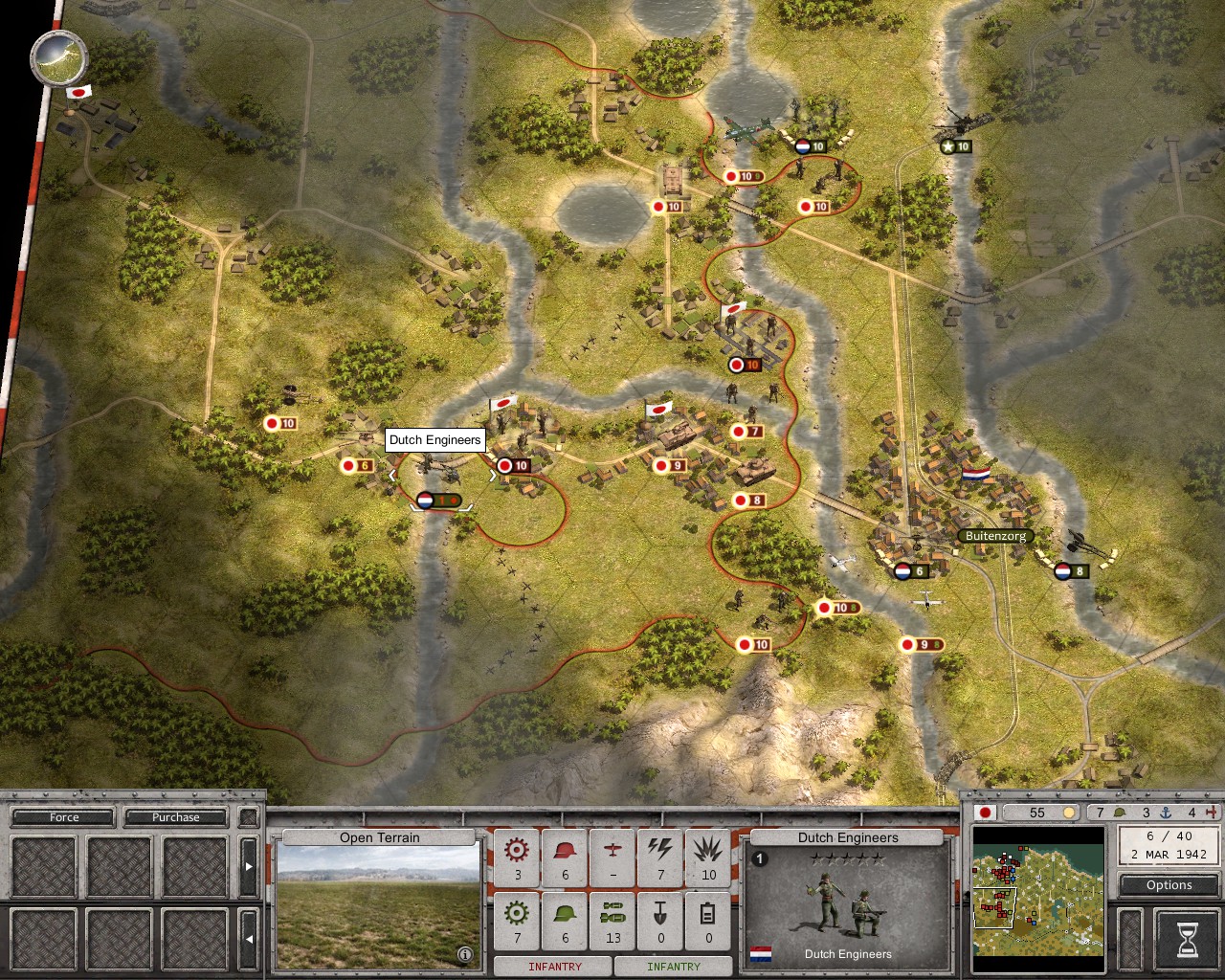
The end result of this is that there is a similar need to take units off the front lines and given a breather even beyond the need to repair units, although repairing while stationary (which you need to do to recover more than 2 HP) will also recover effectiveness. It mostly applies to artillery, who annoyingly have to stop bombarding the enemy every few turns because it’s at 3 effectiveness and can’t even scare the enemy with its bombardment anymore, but it still isn’t nearly as disruptive as WarPlan’s months-long holidays that get extended because it snowed (which it does continuously for 7 months of the year), causing a 15% drop in efficiency and extending the holiday by another month.
It is also worth noting that effectiveness largely only applies to land units. Naval units only lose effectiveness while being repaired, and air units only lose effectiveness in the turn they take off, representing a specific time of vulnerability. They hit max effectiveness the next turn, regardless.
The DLC Split
The original Order of Battle: Pacific was two campaigns for $40, but after deciding to bank on selling multiple DLC “expansion packs” that were stand-alone or chained campaigns, The Aristocrats decided to split the original campaign into two DLCs (and those who already owned the original it got the DLCs for free), while leaving the tutorial mini-campaign in for free, along with the first mission of every DLC campaign, so as to be a form of teaser. They then called this “Free to Play”, although that’s being a little generous, as it’s basically a skeleton onto which the DLC is added, but with that said, the model of “buy only the parts you want ala carte” is certainly a good model. While there are campaign chains where three DLC are made to be played in a row, unless you’re pouncing on a sale, you can just buy the first one, and see if you want to continue from that point onward before dropping the money.
I strongly recommend playing the tutorial campaign, however. The tutorial isn’t your typical hand-holding exercise, but instead a sampler platter of all the game’s elements that the game will let you play at your own pace. The tutorial ironically has one of the best level designs, as it’s the only part of the game that actually is designed to make you use land units and naval units equally and in support of one another. The second mission, for example, has you take over three islands, where you need to capture a port to put your units onto transports to amphibious assault the main island. Where you land on the second island is up to you, but there are enemy naval units you’ll have to use your own naval units to stop from destroying your landing craft. You can choose to land in the obvious place in the south, but landing more aggressively in the middle lets you bypass some enemy defenses and attack the southern defenses from a better position. This is the big strength that this game has over its competitors, and the tutorial sets it up to use it as well as I’ve only seen Advance Wars use combined land/sea operations before, but after it’s set up by the tutorial, there are very few missions that actually use this. The best it gets is the US Marines DLC, which has a lot of amphibious assaults, but lacks any naval units as core forces, meaning you can’t develop them as core forces like in the original two campaigns.
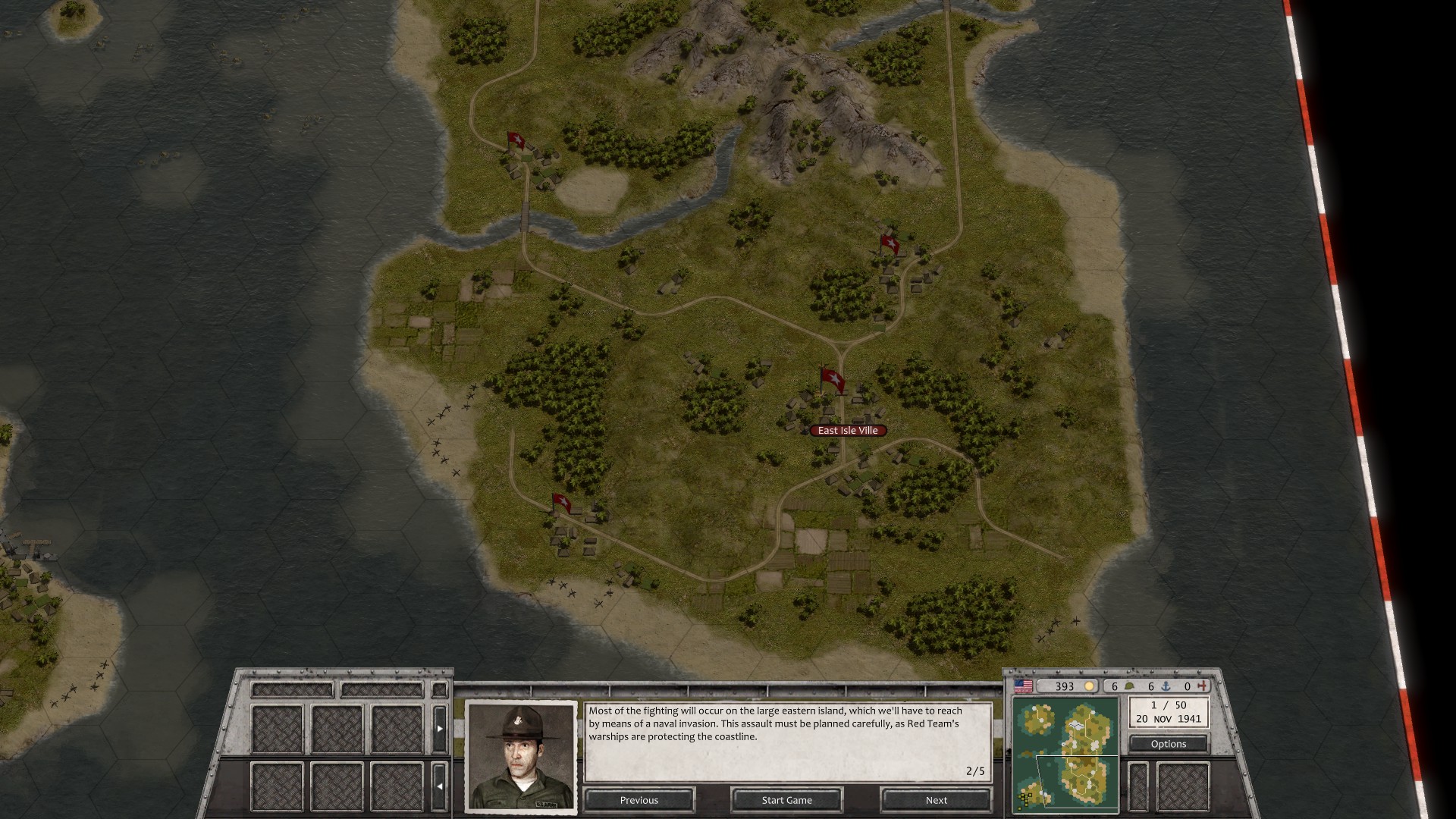
The original campaigns had you switching between naval and land battles while you created a core unit roster from land, sea, and air units. I sadly have to stress the “switching” part, however, as the game will make the battle for control of the sea around an island you are going to invade one mission, then make the actual ground invasion another mission entirely. Worse, you don’t even get to land the units during an amphibious assault yourself, they just start out with a text box saying it was a difficult fight during the most interesting part of an amphibious assault, and it was really cool too bad the game made you miss it. You start off the actual mission in positions the game wants you to have inland and already having a port city with all the supply you will ever need while your naval units are often not allowed to deploy at all.
In terms of what DLC campaigns there are, as the game has matured, they have become more specialized, which I find to be a negative in a game whose biggest selling point is its ability to handle land, sea, and air battles simultaneously. Kriegsmarine, for example, is obviously a campaign solely focused upon the German navy, while the chain of Blitzkrieg, Panzerkrieg, and Endsieg are DLCs focused upon the Wehrmacht. The Blitzkrieg campaign only allows purchasing land and air units, while the Kriegsmarine only allows for sea and only scout and tactical bomber units, not even all types of air units. In spite of being a game built upon combined-arms combat, the mission designers refuse to actually use this strength at every turn.
Multiplayer
Playing multiplayer only requires purchasing one of the DLCs, which means that even when not on sale, if you are only interested in Multiplayer, you can pick Order of Battle up for $10 (if you buy one of the least expensive DLCs – I recommend US Marines) instead of the usual $40 for a game like this. The only problem is that you’d be playing single-instance missions against a human opponent that plays by all the same rules you do, which is to say that you’re playing a game with a fundamentally different set of goals to it. This is a game that is by and large built upon the campaigns and their premise of nursing the health of your precious core units, so you’re playing an almost totally different game in multiplayer.
I’ve personally never played Order of Battle because of this, as I’ve only been interested in the Campaigns, but since it is fairly inexpensive, I’m sure it makes a good intro to the genre if you’re just looking to get your feet wet, and you can think about getting games with more focus on the multiplayer (like WarPlan) if you find you and your friends are getting into it. That said, check out the player-made custom maps, as these can expand your options quite a bit.
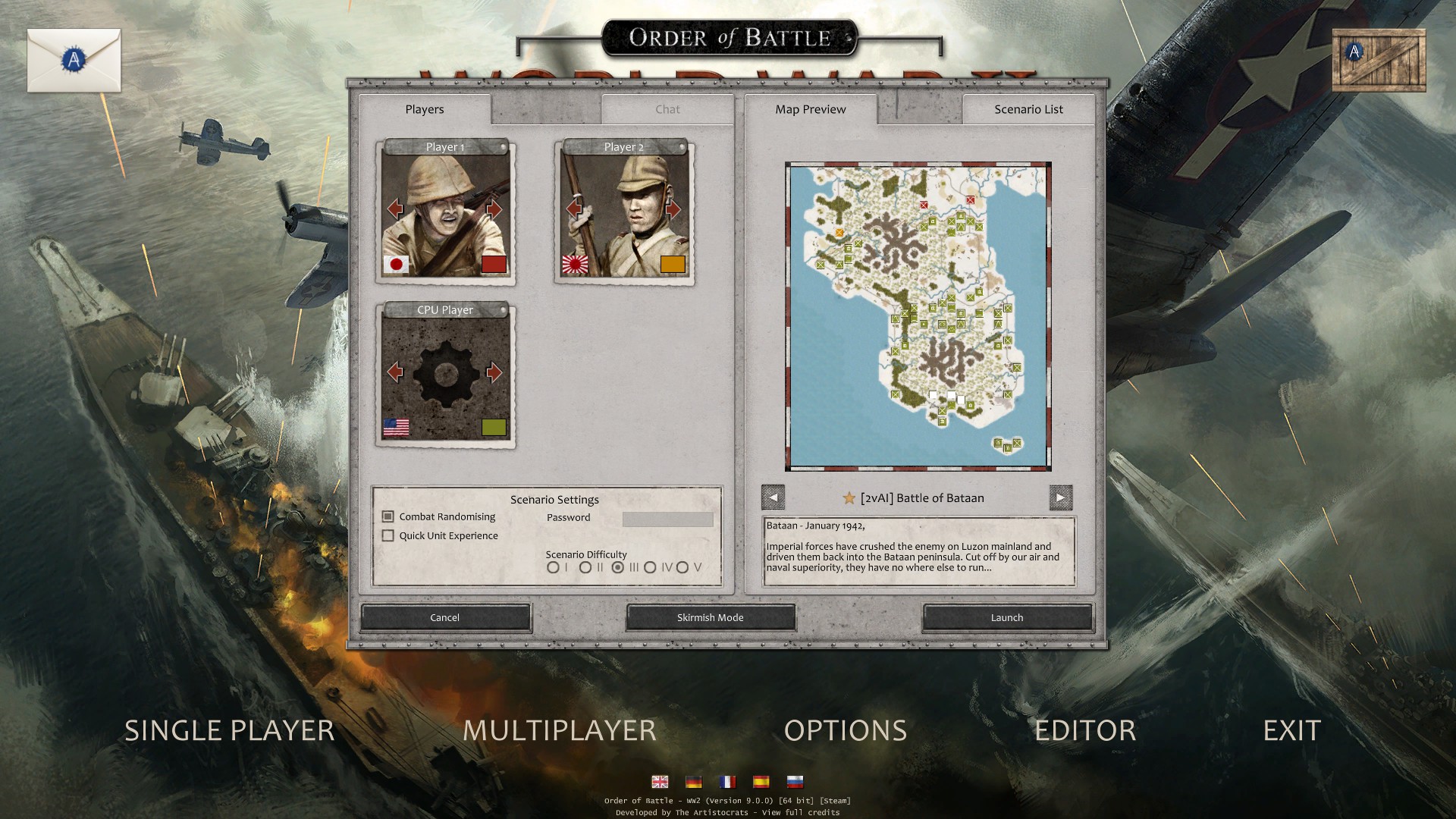
Custom Maps and Modding
Order of Battle also comes with a fairly robust map editor and mission creation system. This probably puts more value into the Multiplayer, as these can be played without feeling like it’s just a leftover map from the campaign played without the greater context. (Multiplayer maps include some campaign missions rebalanced for two players, although they do include several ahistoric matches with forces that are more RTS-style mirror image battlefields for absolutely equal positioning.) Make missions to play with or against your friends, or try to make missions that actually use the game’s combined-arms setup to its full potential.
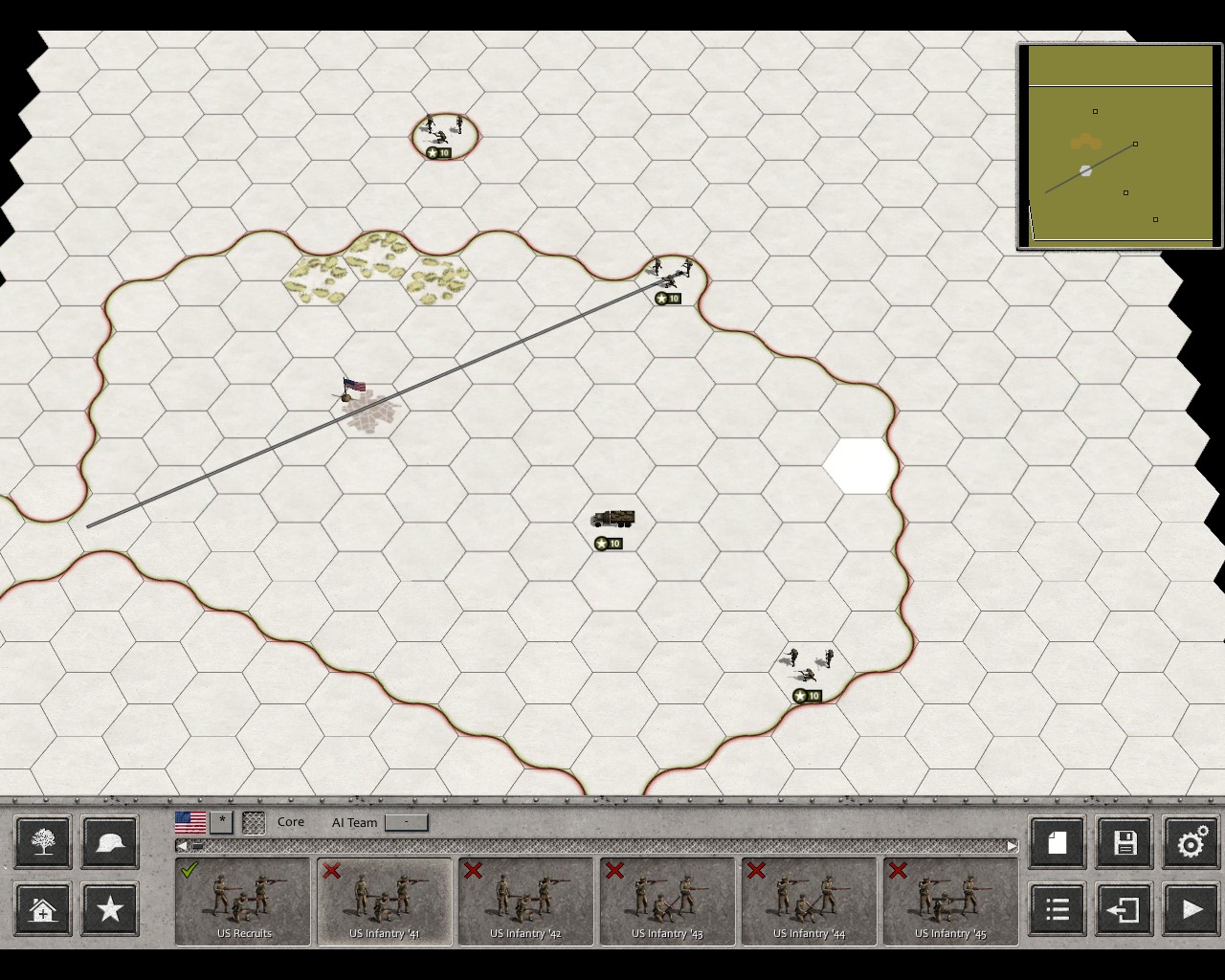
I have not done any modding of Order of Battle myself beyond playing with the map editor so I cannot speak to it, however the Slitherine forums have a modding guide and sub-forum. Much of what they are doing at a glance seems to be mission creation and custom scripts for the AI rather than some sort of total conversion, however.
Supply Problems
I referred to the RP economy as the largest discordant element to the game’s strategy, but it isn’t the largest negative overall in my book. When I covered WarPlan, I praised it for refining the supply system I first saw in Unity of Command and turning it into a system that was simple, elegant, highly impactful to how the game is played, and key to forming strategic plans. I then said I bitterly wished that Order of Battle could have used a system like that, and that I’d even gone onto the Slitherine forums to argue for it, only to find little traction for it. Well, here we are reviewing Order of Battle directly, and it’s still by far the biggest wasted opportunity in Order of Battle to create the potential for a meaningful supply system, then ruin it by making single cities with no supporting farmlands or anything capable of supporting whole armies across impassible mountain ranges.
Supply in Order of Battle is based upon each land unit consuming its CP cost in supply. Naval units not only do not consume supply, they produce supply they can give to land units just by sailing up to the coast. The big problem with this, however, is that supply only has meaning when you cut off access directly between supply points and soldiers. There is no limit to how far supply can be shipped or supply efficiency over difficult terrain, any connection of your zone of control border, even over those aforementioned impassible mountains, is fine. It is a simple check of whether you have enough supply generated in your cities or not, and single cities you start the mission with generate more supply than your CP cap, meaning it is literally never a factor unless you get your whole supply line cut off around a single minor town or have only supply being brought in by naval units – and the game’s mission designers absolutely hate creating situations where you need to tie down your naval units bringing supplies, even though it is clearly what that mechanic was added to make you do in the first place!
This is additionally exacerbated by the fact that there is no “basic supply” like in WarPlan, units are either in supply or not, and if you have 11 CP of land units getting 10 supply, then every unit is “out of supply”. Due to this, the game goes out of its way to prevent situations in most missions where you actually could seriously damage enemy supply, as it would be an easy win if you could bleed the whole enemy army of effectiveness by cutting overall supply, and therefore missions are filled with those 50-supply cities that negate the entire supply mechanic entirely. It’s only in specific setpiece missions where they explicitly tell you to cut enemy supply lines that it’s possible to cut off a chunk of the enemy forces from supply.
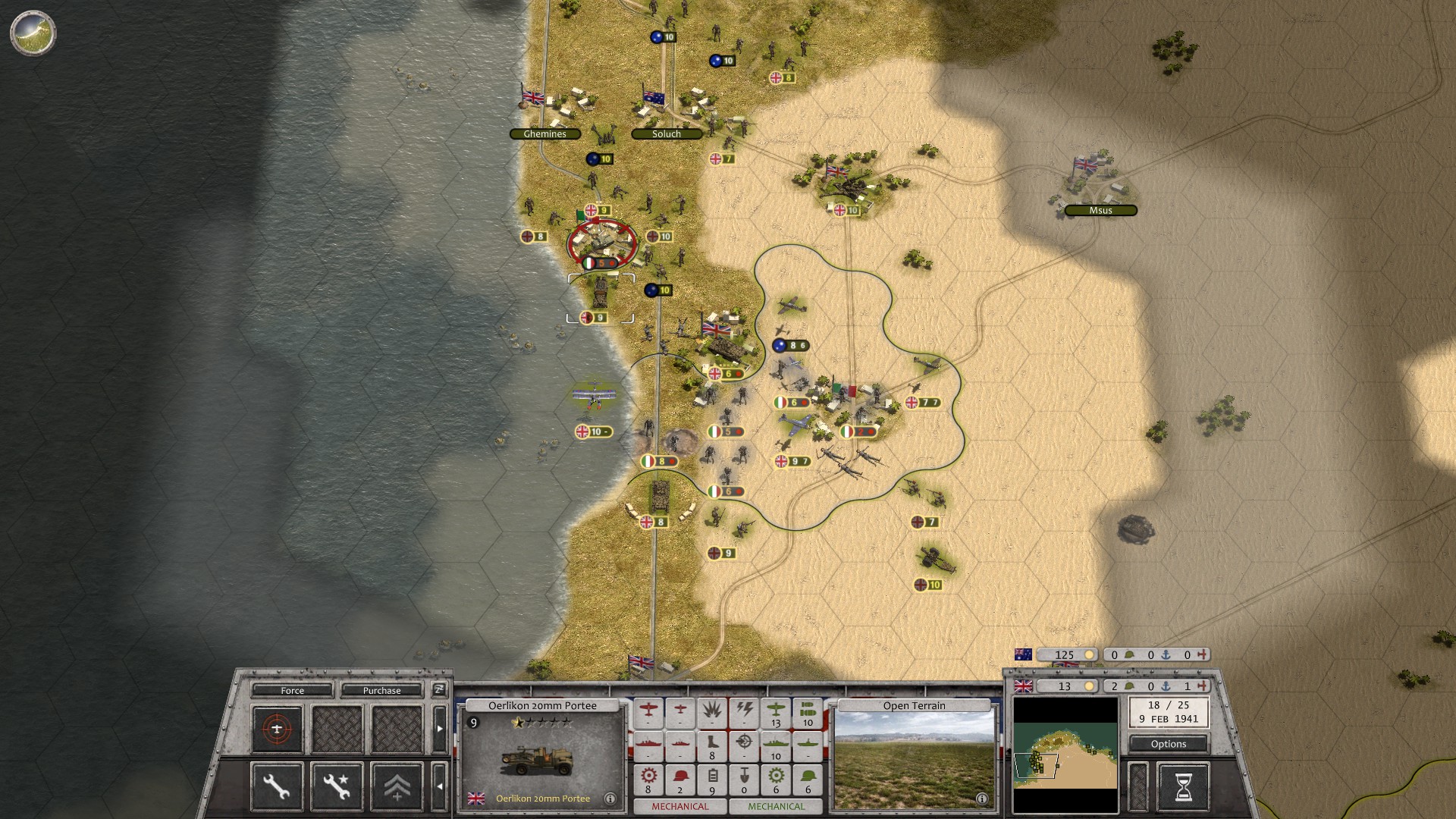
This also creates other balance problems. Strategic bombers, in order to make them relevant, have an ability to temporarily inflict supply damage to cities. This means that a city, which again, is often in supply with several other cities and where a single city is often more than enough to supply the entire army on the field with dozens of supply points to spare, will take about 2 points of supply damage that will recover over the next turn. Hypothetically, if you threw dozens of strategic bombers at a single target that was cut off from the rest of supply, it would mean something, but you never get the chance to field dozens of bombers, you get at most two or three once you take out the CP you need for their fighter escort, and you’re going to make them tactical bombers because strategic bombers are basically useless and far too expensive for their effect and general vulnerability.
That said, being out of supply is also a bit of a slap on the wrist. You lose 2 effectiveness per turn and have your movement cut, but in most cases, it isn’t hard to re-establish contact, and 2 effectiveness is only 1 more than you’d have lost just fighting normally, so a single turn of being out of supply is no serious setback. It certainly adds up, but any unit cut off behind enemy lines for more than one turn is almost certainly in a hopeless situation even without supply being an issue.
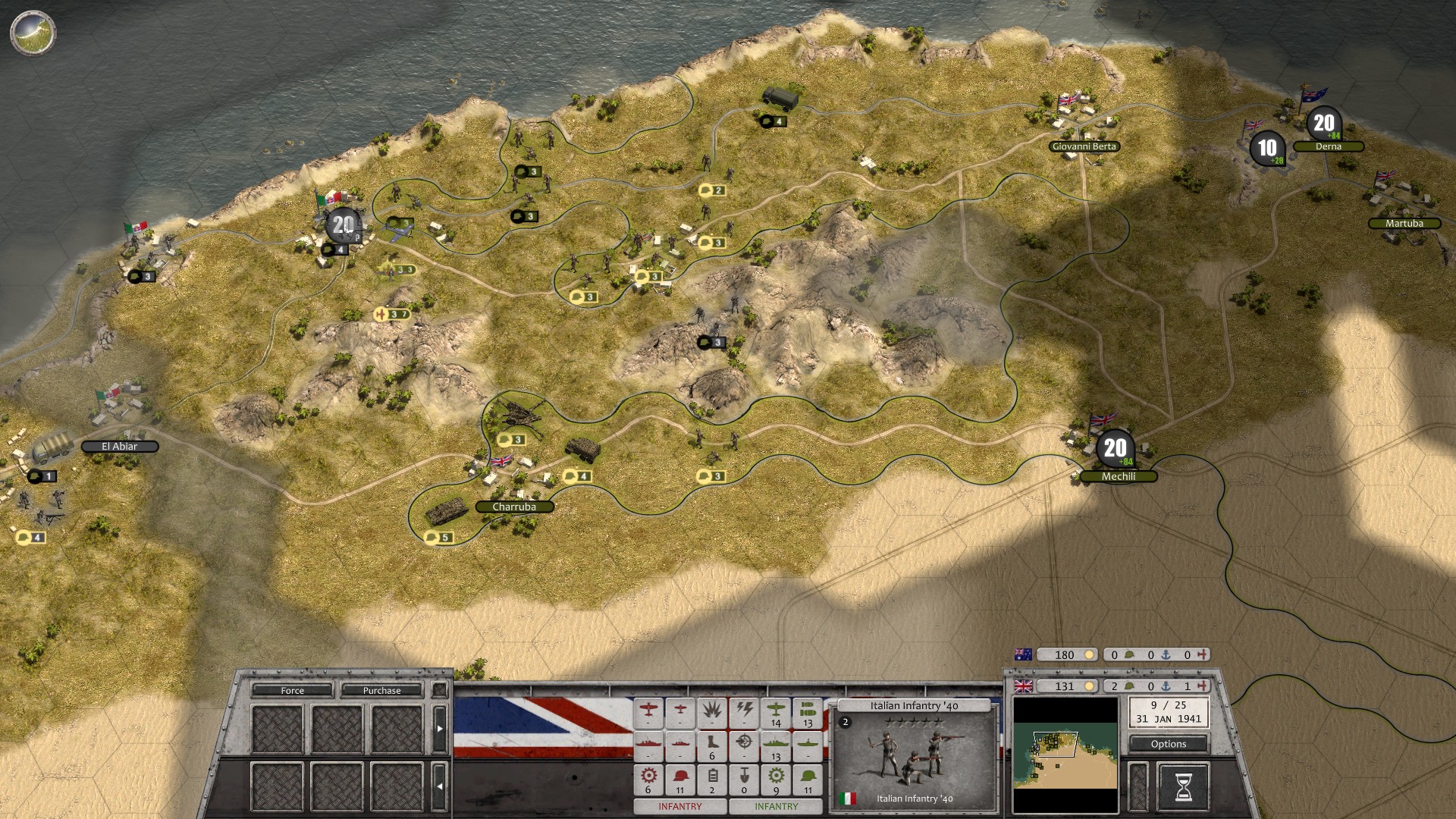
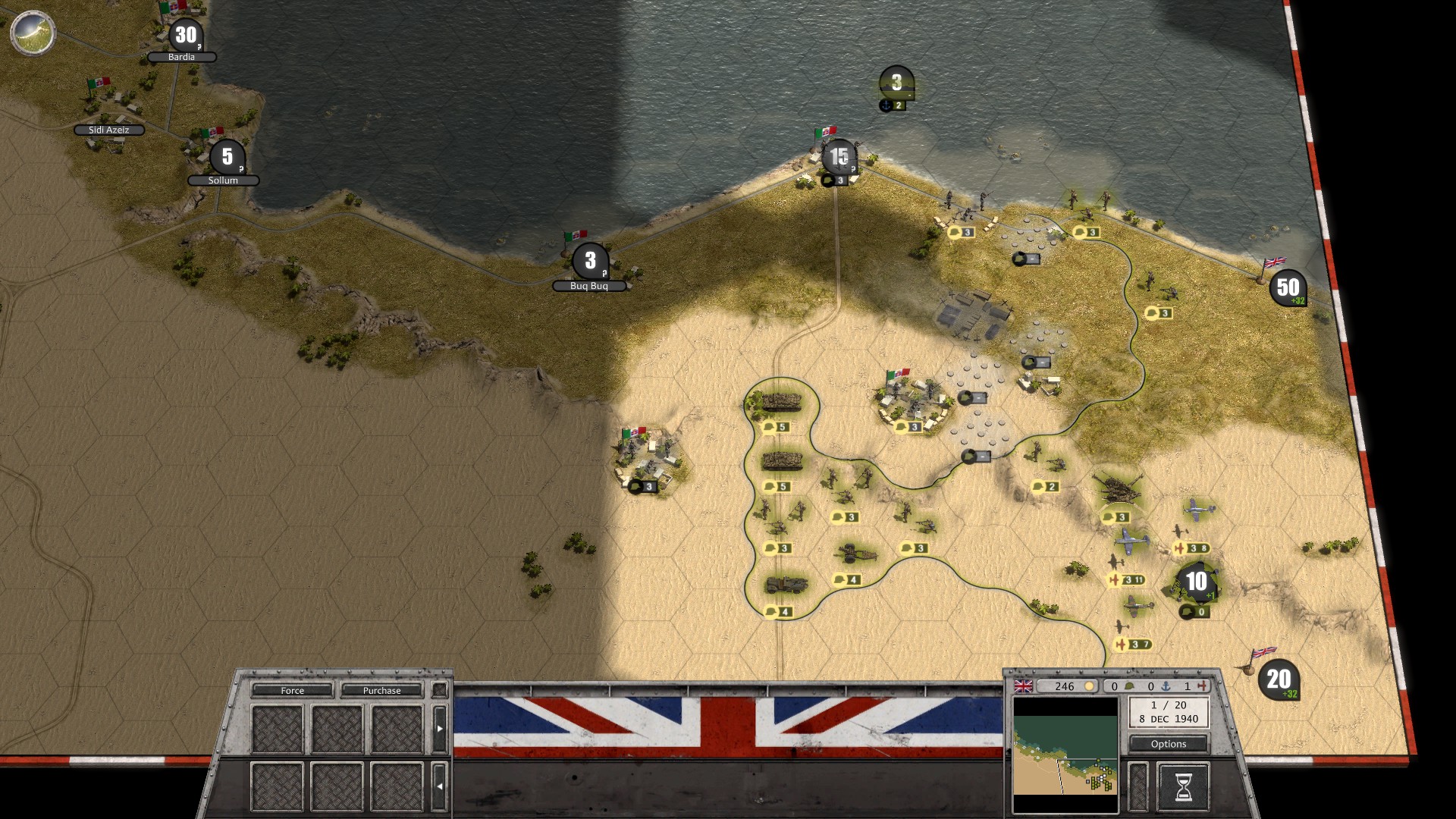
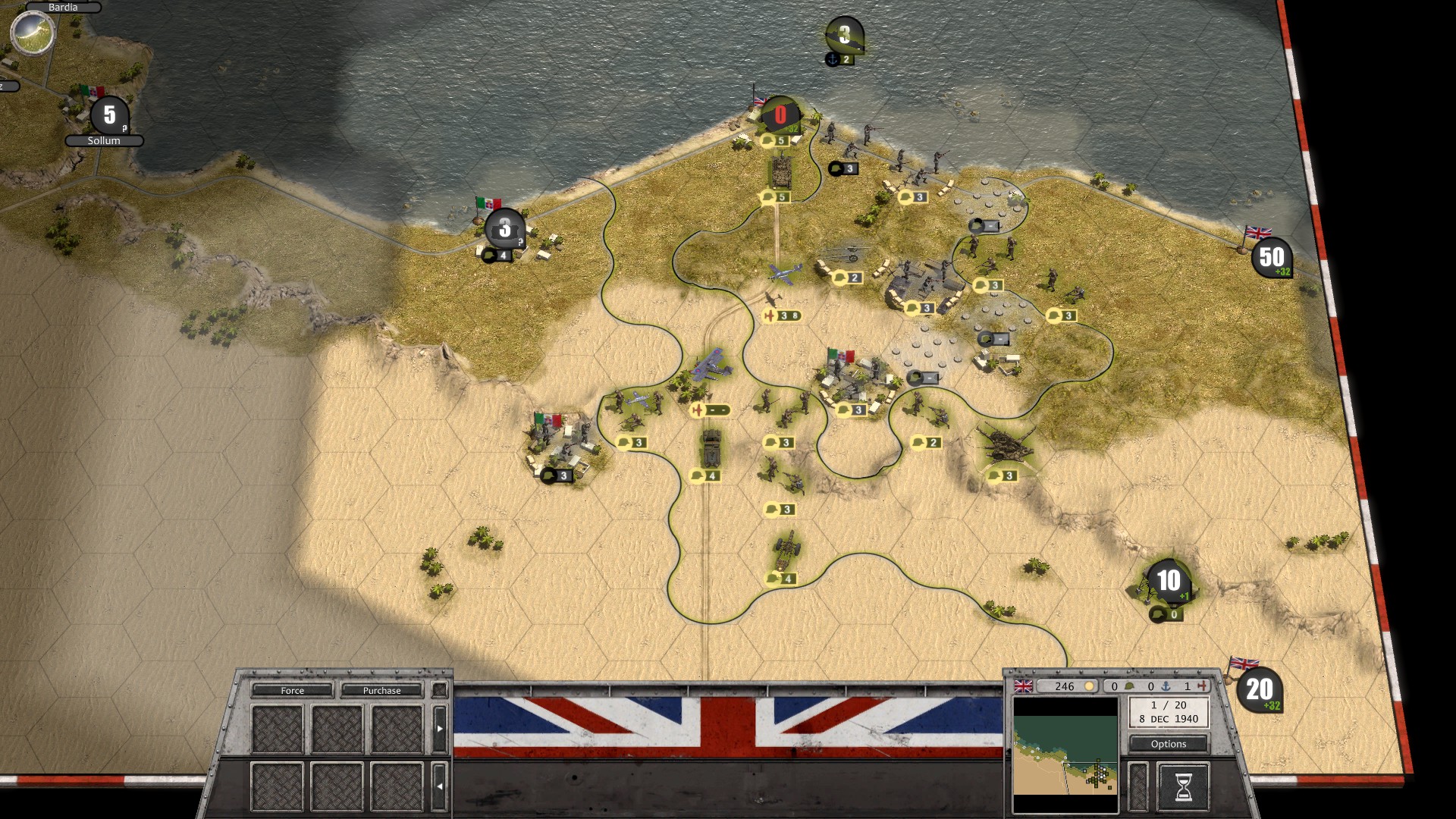
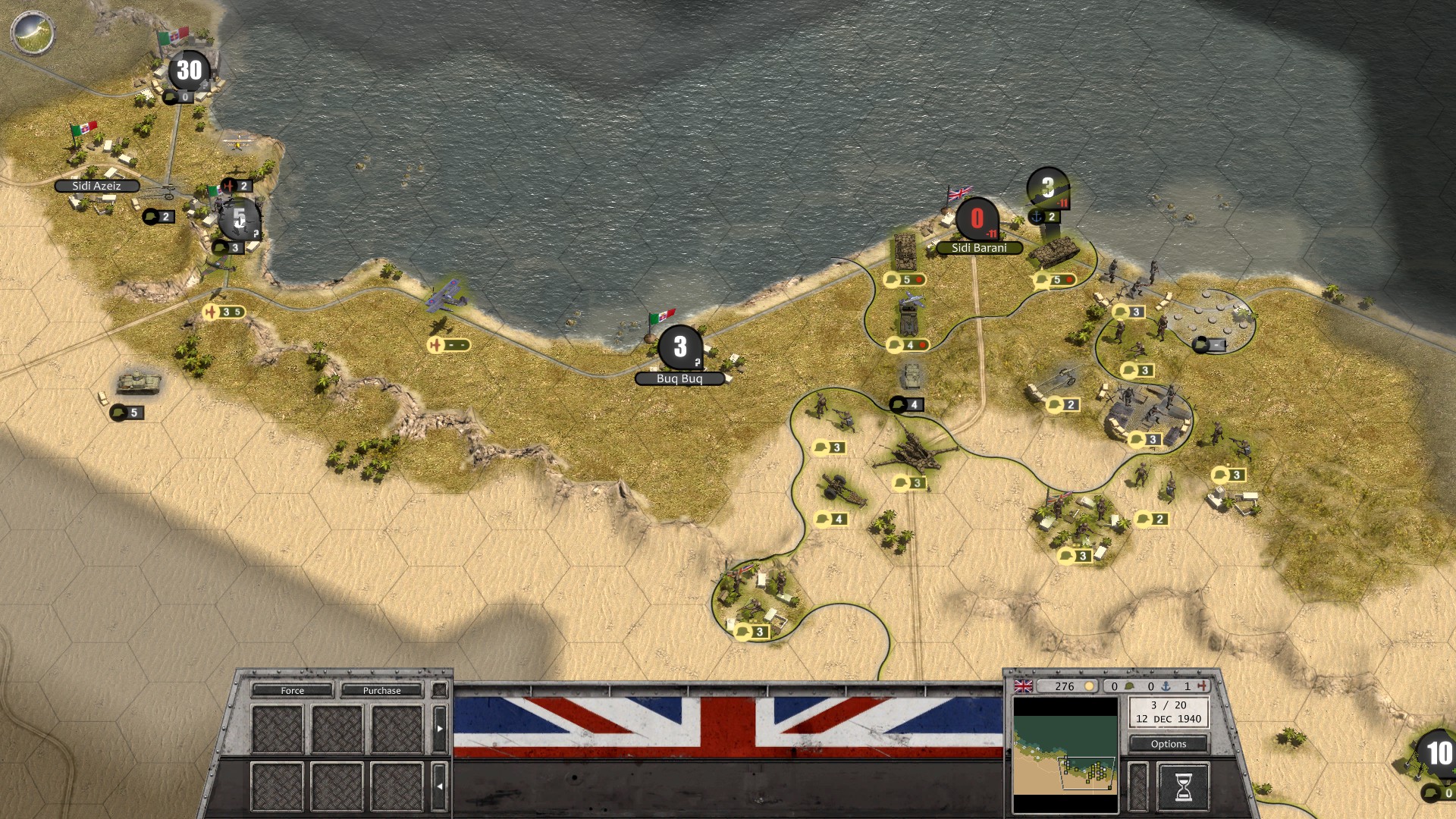
This also is likely part of the reason why the game is so shy about allowing the kind of amphibious assaults it was designed to allow you to perform – the supply situation would actually be interesting and strategically important, and we can’t have that!
The Guadalcanal Campaign was the Pacific’s Leningrad, the point where the Japanese bled themselves dry after failing to take a single stubborn objective because they had stretched their supply lines too thin. The Japanese resorted to “Tokyo Express” missions, using their destroyers as transports because only they were fast enough to run supplies to the beleaguered army during the night when American air cover would destroy any ships nearby during the day. This just isn’t represented in Order of Battle.
In the Allies Defiant DLC, there are naval battles taking place, including a specifically naval-only battle in Cape Matapan, and the game has missions that, in their briefings, mention how the British have cut off Rommel’s supply in North Africa, and it was a really critical and interesting part of the war effort to sink all those transports, really fun. Too bad you aren’t allowed to participate in that, because it would have made for a dynamic two-front battle where success in one front (which I could be faced with a choice over where to send my airpower) could have a push-and-tug effect on the other side!
This is why, in the WarPlan review, I basically held up its supply system and shouted, “THIS! Why couldn’t you have just done THIS, Order of Battle?!” (I will note I even went on Order of Battle’s forums, and held up the Unity of Command supply system, and described a potential system very similar to the one WarPlan uses, only to have it dismissed as “too complicated for players”, yet it’s really simple and easy when WarPlan does it, and I’m not bitter at all, but I’m going to make a big section of my review about how I was right and you were wrong forum guys!)
Cheevos
Unlike a lot of games that have tons of DLC, Order of Battle doesn’t add new campaign-specific achievements with each new DLC. That said, the DLC was balanced to be a challenge for someone completing the original two campaigns, which were based upon switching between land battles and naval battles, and ask you to do things like have 15 kills of a given unit type on a single unit (I.E. “get 15 infantry kills on one unit”) or there being an achievement for maxing out experience for a unit of every type. This is not so hard for an infantry or tank unit that sees a lot of action, but it is hard to get an AA gun or AT gun up in veterancy, as they are more area-denial weapons than offensive weapons. That said, playing the chained campaigns where you only have land units can very obviously make things much easier. If it’s possible in a campaign that only has 7 land battles, you can bet a chained campaign with 36 land battles will give you plenty of opportunity to max out a unit.
That said, the presence of achievements that you have yet to attain and want to attain can also warp your strategic thinking. A unit with max experience is extremely expensive to repair, so front-line units like tanks in particular are a liability to keep elite repairing. (The increased effectiveness in no way compensates for the increased costs, especially when you go bankrupt.) Unless you decide not to pursue an achievement or you already have it, trying to go for one can be an albatross, especially on harder difficulties.
Interface and Options
Panzer General itself was notable in rebuilding the strategy interface to be less obtuse and more functional for the player, giving it a much greater usability for those who weren’t already steeped in the lore of overly complex tabletop wargames. Order of Battle manages to give you a
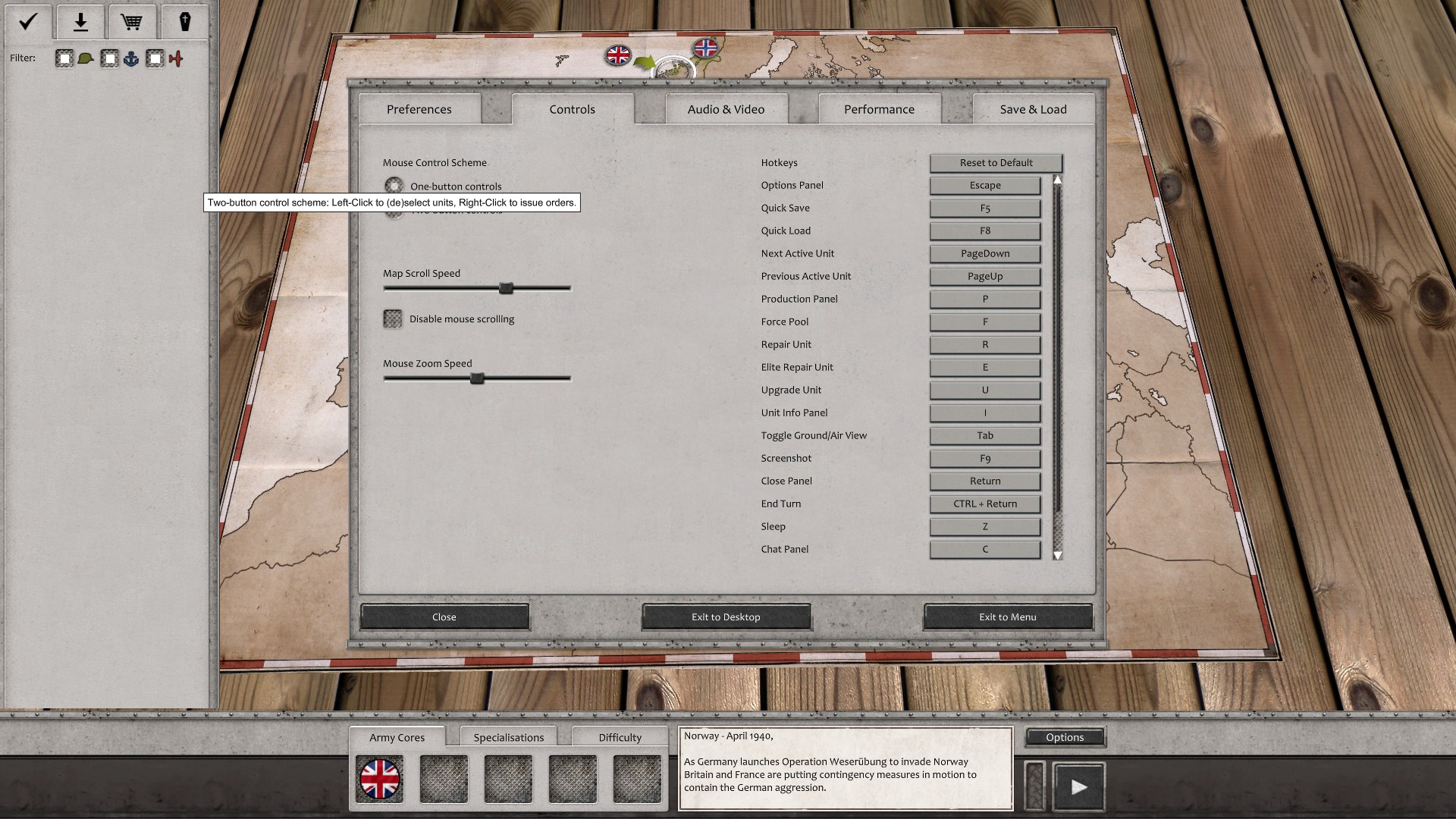
The only things I’m missing are some quality of life controls like speeding up combat animations, and possibly having a battle report that gives me exact numbers of engagements that happened in the last turn, with details like exact effectiveness loss. While it is nice to have a direct representation of how much damage an attack will cause for immediate planning purposes (and I especially appreciate being able to see how the damage, for long-term understanding and strategic purposes,
With those minor niggles out of the way, however, especially as someone who frequently reviews indie games where a bad interface ruins the whole game, Order of Battle’s interface gets high marks.
Loading Times, Waiting Times
One issue with missions in Order of Battle is that the load times can get fairly long on larger maps, especially “cinematic” maps such as Allies Defiant’s “Lowlands” (Fall of France part 1) map, where there are a great many units not under your control that are fighting. The load bar’s progress becomes seemingly inversely proportional to how full the bar is, leading to a very false sense of how long it will take, and it can take about a minute to load. It’s in that annoying spot where it isn’t so interminable that you feel the need to just get a book or play on your phone while waiting for it to load because it looks like it’s almost done, but it’s actually not even halfway complete. What’s worse is that there is no “undo move” button in this game, you can just use a quicksave and quickload. Oh, did I mention that, unlike Strategic Mind, it doesn’t keep any data from the current mission when you quickload, and has to do the full loading time every time you load a save? I guess that’s one way to discourage savescumming. (Although I should note that this is a less random game than many, and it will directly tell you an expected outcome of any given attack. On higher difficulties, however, these outcomes are lies, and if it tells you that you will deal 4 damage for 0+ damage in return, you will deal 2 damage and take 2 damage.)
On the same topic of wasting the player’s time, another problem is that there are no settings or buttons to increase the speed of attack animations. (There is a slider to increase movement speed, and this should be maximized at all times, as it’s still not fast enough.) During battles like the aforementioned “Lowlands”, where there are 30 attacks per turn, often against uncontrolled units in the background, enemy turns can involve 3-5 minutes of the exact same infantry firing rifles and throwing a grenade animation dozens of times in a row. I miss just being able to look at battle reports on the next turn.
Worse, there is an option that is on by default to pause the game when minimized. This pauses loading screens as well if you wanted to just check your email or something while waiting for the chance to be able to play the game again!
Graphics and Sound
If you zoom in all the way, the graphics aren’t very detailed, but you can’t zoom in all the way to a single unit like in Strategic Mind for a reason. These are units meant to be looked at from a distance, and they’re perfectly fine for the genre. Panzer Corps, which this game was competing with most directly, notably only had 2d images that always faced right or left, depending on whose side they were on, so having full 3d models is a big step up. The only problem I can have with their representation is that tanks need to have the turns of their hull and turrets animated, and they’re often pretty slow to rotate around, adding to the general problem of the slow combat, especially on enemy turns when enemies have large numbers of destroyers to harass your side.
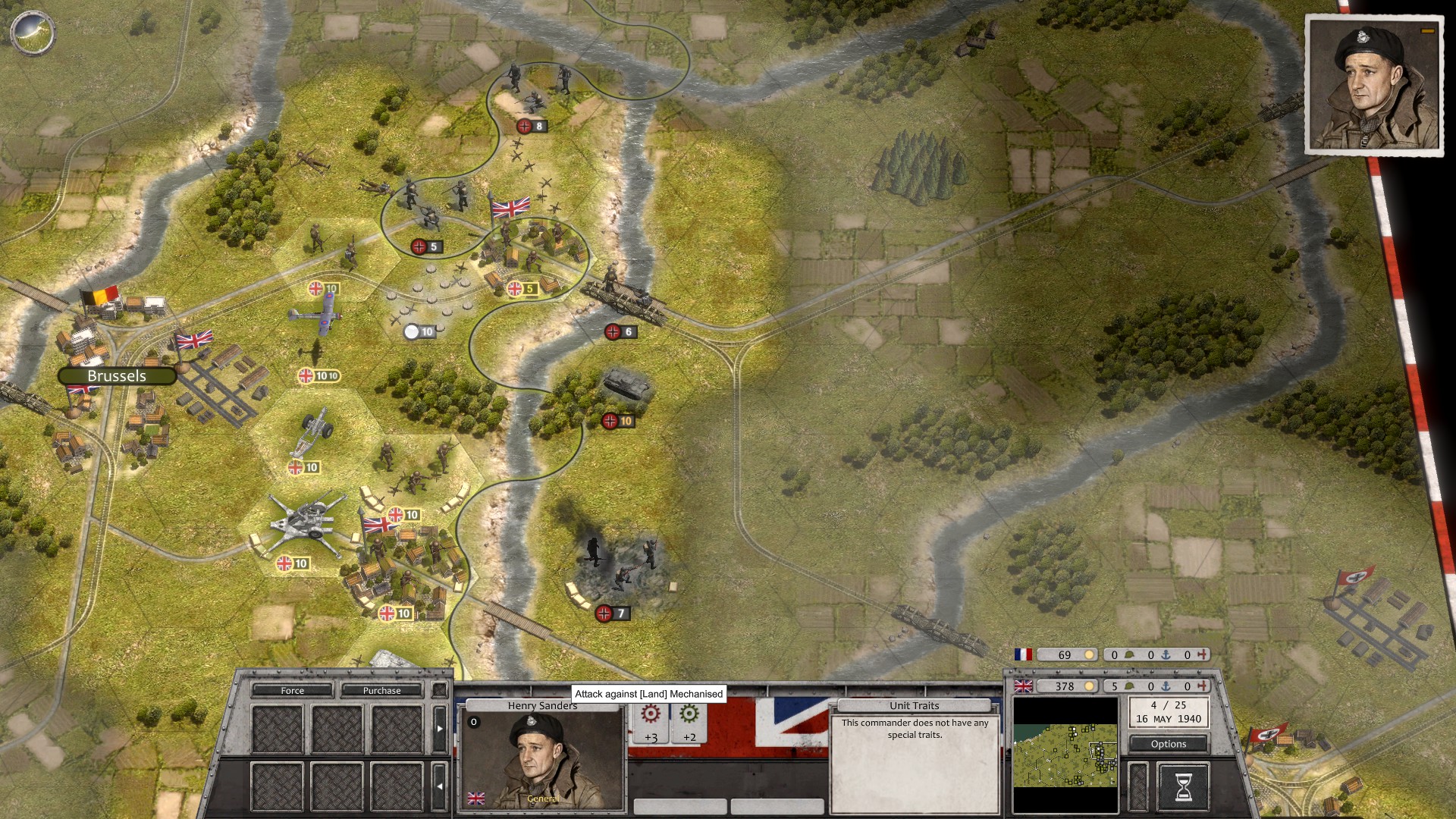
The music is, like WarPlan, more suited to a war movie than a war, although it’s somewhat less over-the-top bombast. That said, cinematic soundtracks fit the closer-in, more cinematic aesthetic of Order of Battle more than it does the extremely dry High Command pushing tokens around a board pushing tokens around. Missions can be long, however, and the selection of tracks is rather limited, so you’ll be hearing a lot of this music on repeat.
The sound effects, however, are quite impactful. When artillery or battleships open fire, they’re much louder than other sound effects, to the point of being terrifying if you didn’t turn the volume down. The sound quality is good, as well, and if they took them from stock footage, they at least cleaned up the quality before sticking it in the game.
Verdict
For better or worse, alongside its sister game Panzer Corps, Order of Battle is the inheritor of Panzer General’s legacy to the point it is the standard to which I judge all other strategy games. Any strategy gamer should at least play the free portions (the “tutorial” campaign is actually quite fun) just to understand the game every other strategy game is trying to one-up with whatever their new innovation is. Order of Battle will hopefully remain around for a while to come, because while there are some mechanics I disagree with, simply expanding upon a solid engine with mission pack after mission pack in a “buy only what you like” strategy is a solid way to build a good game with tons of content for a fair price.
With that said, it is also a frustrating game because it is often not so much directly flawed as squandering opportunities it could have taken, exacerbated by mission design that deliberately plays against the game’s own distinctness and strengths.

